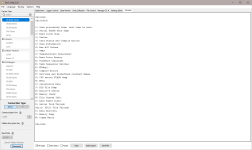Terminal Tab
The Terminal tab will be available when the application is connected to any device type that can be communicated with in a remote terminal mode. The Terminal tab offers a terminal emulator that can be useful in accessing settings or status information that are not exposed in other windows. For example, classic dataloggers with PakBus operating systems that are configured as routers contain routing tables that list the other PakBus nodes that are known to that datalogger. This routing table is only available through the *D17 mode (see *D descriptions in the datalogger’s operators’ manuals) using the keyboard/display or a terminal emulator. Another example is that the status table in mixed-array dataloggers (*B) can also be accessed via an “S” command in terminal mode. This status information can provide important data for troubleshooting purposes.
The default for the Terminal tab is to only show characters that are returned from the device. However, if the Echo Input check box is enabled, the screen will also display the characters actually typed by the user.
The All Caps check box controls whether the keyboard input will be forced to upper case before the characters are sent to the device. It will be disabled for some device types that require upper case input.
